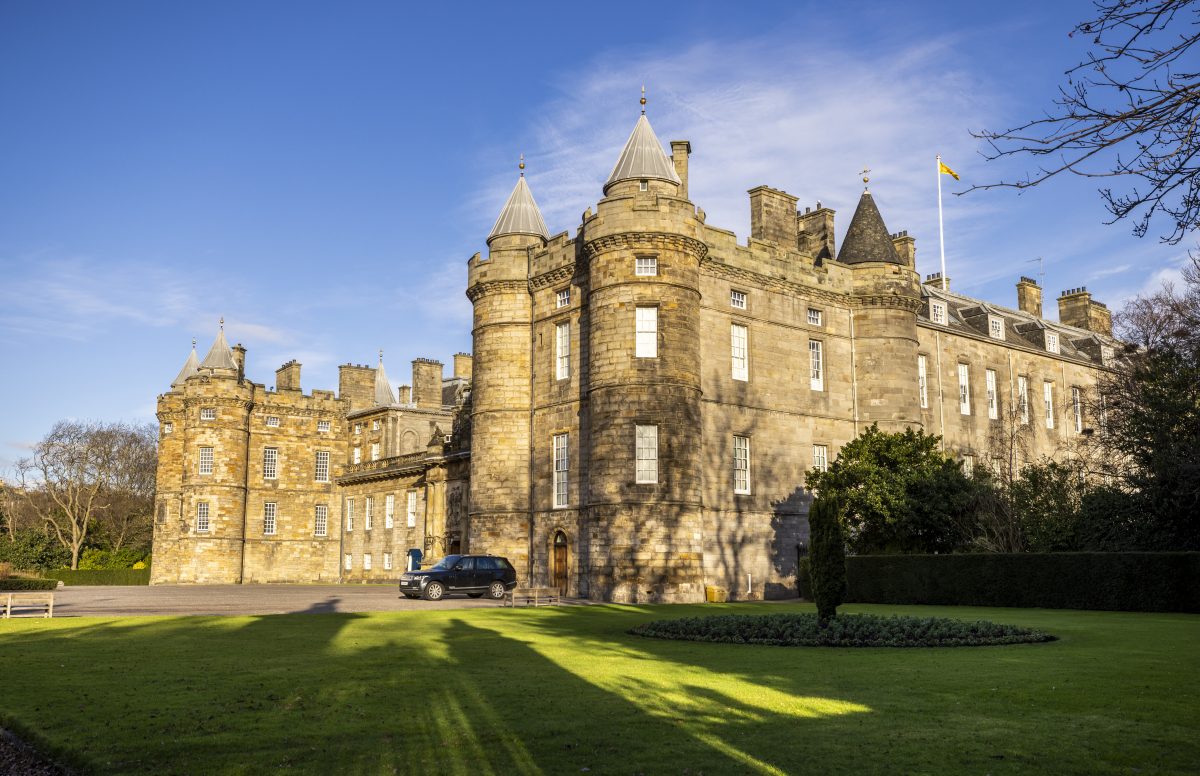Last Updated on February 8, 2024 by Marian Jones
The Palace of Holyroodhouse, at the opposite end of the Royal Mile from the Castle is another site full of intrigue and history, or as its guidebook puts it: ‘Wars have been plotted, dancing has lasted deep into the night, murder has been done in its chamber’. And it still it is the official residence of the British monarchy in Scotland. This post tells the most interesting stories about the palace and its adjoining abbey and highlights what to look out for when you visit.
the abbey
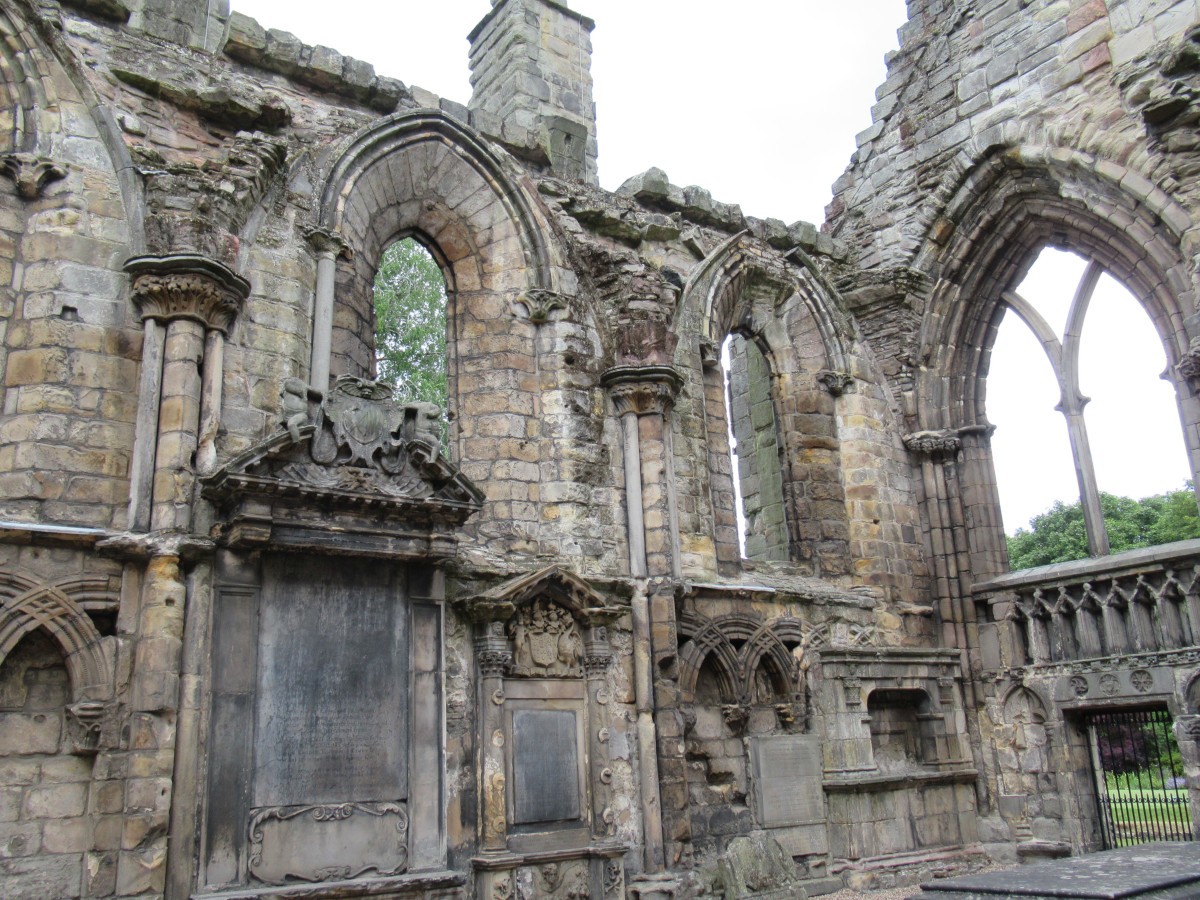
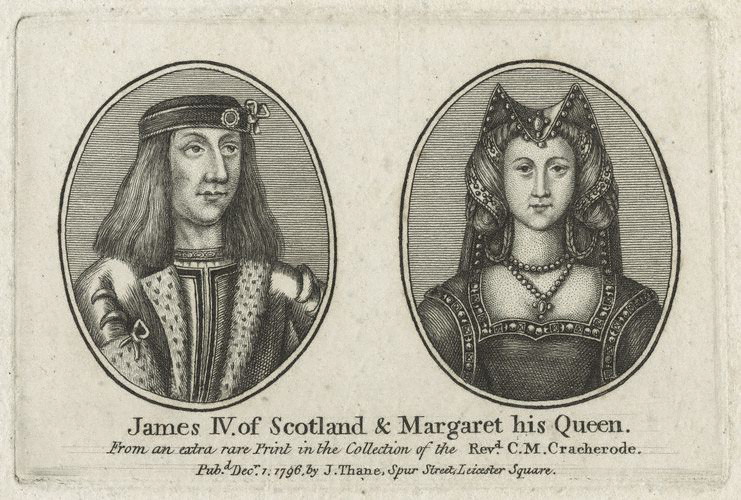
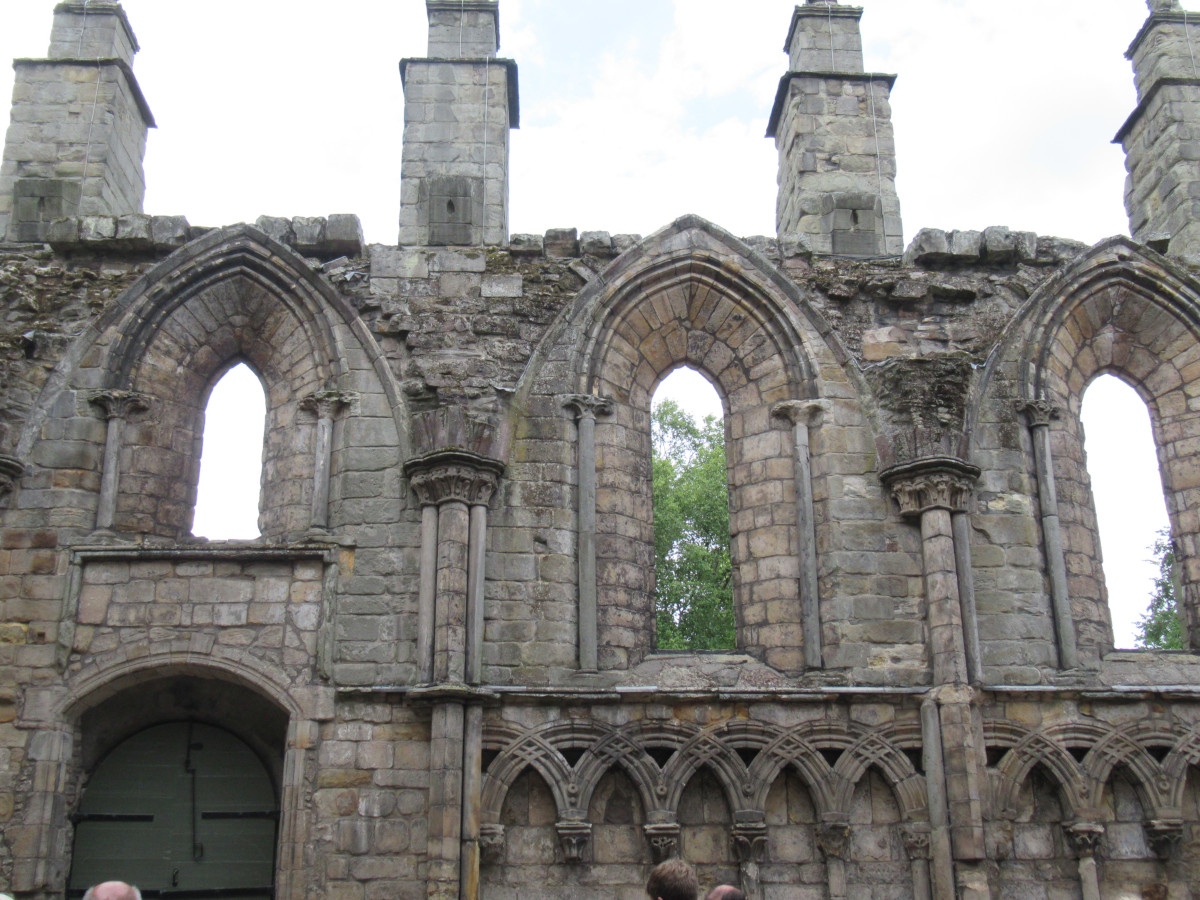
The founding of the abbey, which came before the palace, explains how it got its name. One morning in 1128, King David was out hunting and was attacked by a stag. To his great relief, a hand emerged from a cloud and handed him a sparkling cross which to defend himself. So when, that night, he dreamt that St Andrew commanded him to built a monastery on the spot where he had been saved and to dedicate it to the ‘holy rood’, meaning ‘holy cross’, he resolved to do so. Its crest would show a stag with a cross between its antlers and its motto would be Tutuum te robore reddam, or ‘I will give you safety by strength’.
There followed 600 years of worship and royal ceremony on this site. In 1498 the building of Holyrood House was begun, to provide accommodation for the monastery’s many visitors. Gradually, royal connections developed with both the abbey and the palace. The story of King James II, who reigned between 1437 and 1460 is a prime example: he was born, crowned, married and buried here at Holyrood. In 1768, the abbey was badly damaged by a storm and fell into ruin. Since it was never repaired, it remains today a romantic ruin in the grounds of Holyroodhouse.
a royal palace
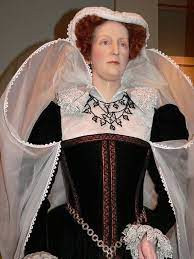

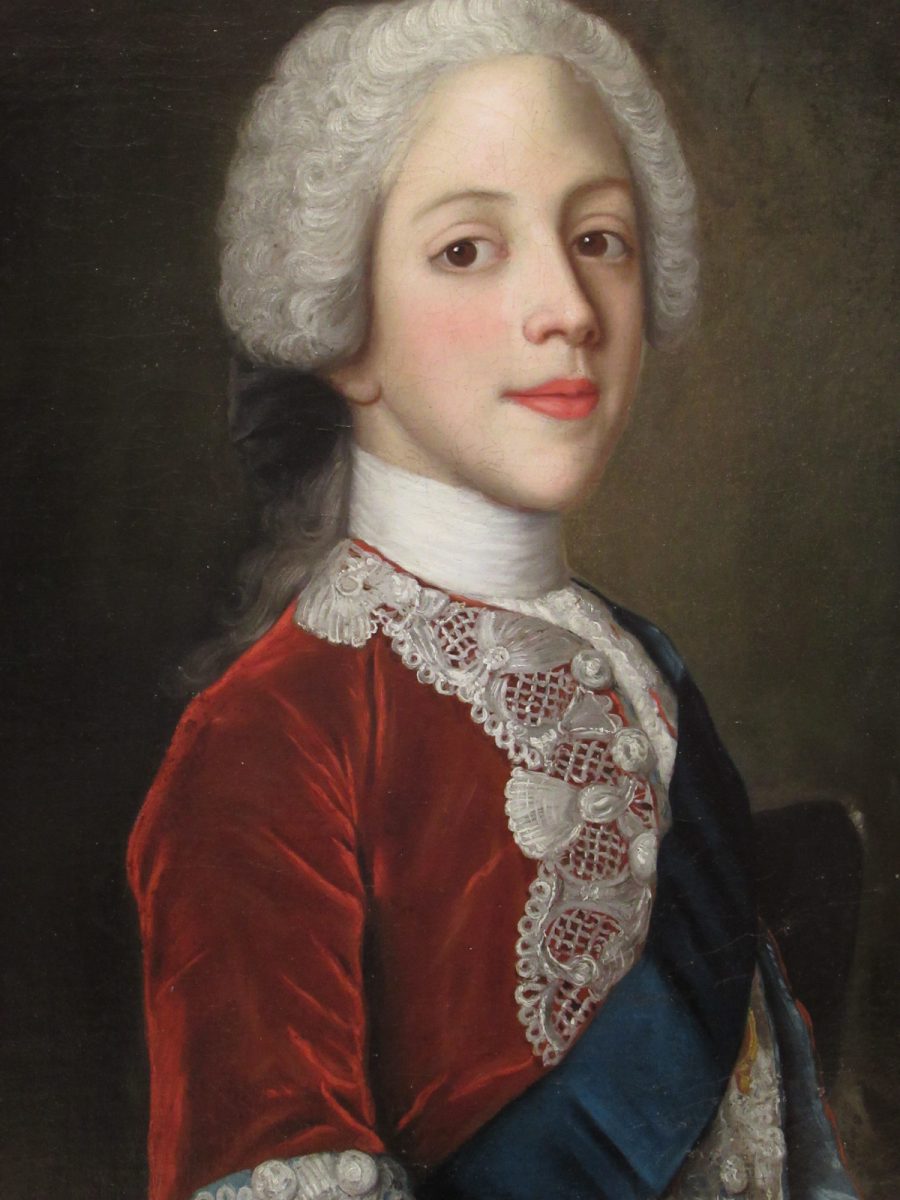
It was James IV who began building the Palace of Holyrood and the story of his wedding to Margaret Tudor, the sister of the future Henry VIII, which took place in the abbey in 1503 is dramatically told on the audio guide. James wore a jacket with sleeves of crimson, a doublet of gold cloth and a pair of scarlet hose for the ceremony which was followed by a 15 course feast featuring roast crane and swan. Bonfires were lit in celebration all over Edinburgh. The couple had six children before James was killed, fighting (oh, irony) the English at Flodden Field and their descendants included James V and VI and then their great granddaughter, Mary Queen of Scots.
It was at Holyrood that Mary Queen of Scots married Lord Darnley and here too that she held audiences with the protestant firebrand John Knox who argued so furiously against her catholic faith that she retorted: ‘I have offered you … audience whenever it pleased you to admonish me, and yet I cannot be quit of you. I vow to God, I shall be revenged.’ Another drama involving Mary occurred one night in 1566, when a posse of men stormed into her private rooms and murdered her confidant and secretary, David Rizzio, stabbing him over 50 times before her horrified eyes. There is more on the podcast on Mary’s connection with Holyrood.
Later monarchs with strong connections to Holyrood include Mary’s son, James VI who had a large court here until he left Edinburgh for England in 1603, when things at Holyrood became quieter. Charles II had the palace refurbished and built new royal appartments and in 1745, Bonnie Prince Charlie, newly returned to Edinburgh, established a base here, lunching in public and holding extravagant balls in the Great Gallery before marching his troops to defeat at The Battle of Culloden. Queen Victoria loved Scotland, often stopping at Holyrood en route to Balmoral and it was in her reign that the palace became the official Scottish residence of the royal family. There are more stories on royalty at Holyrood on the podcast.
what to look out for
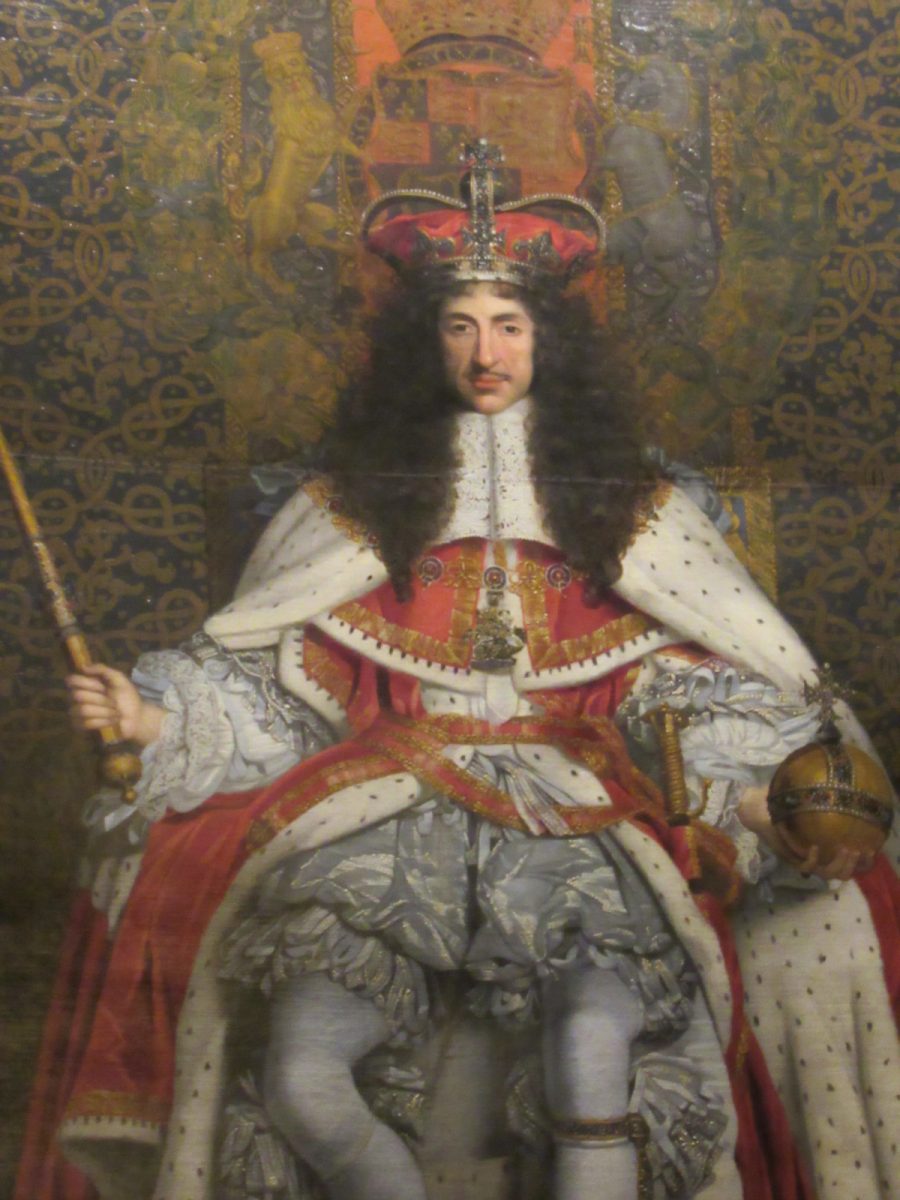
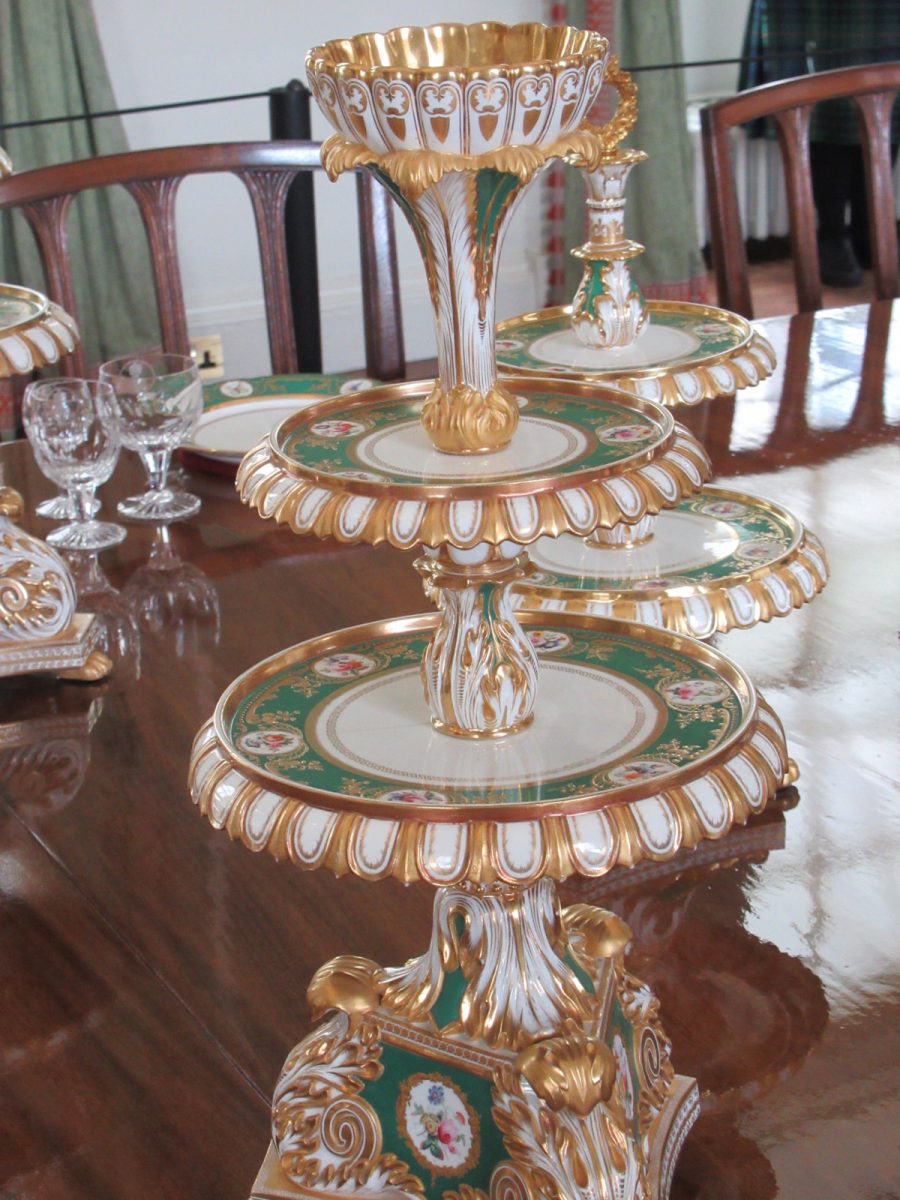
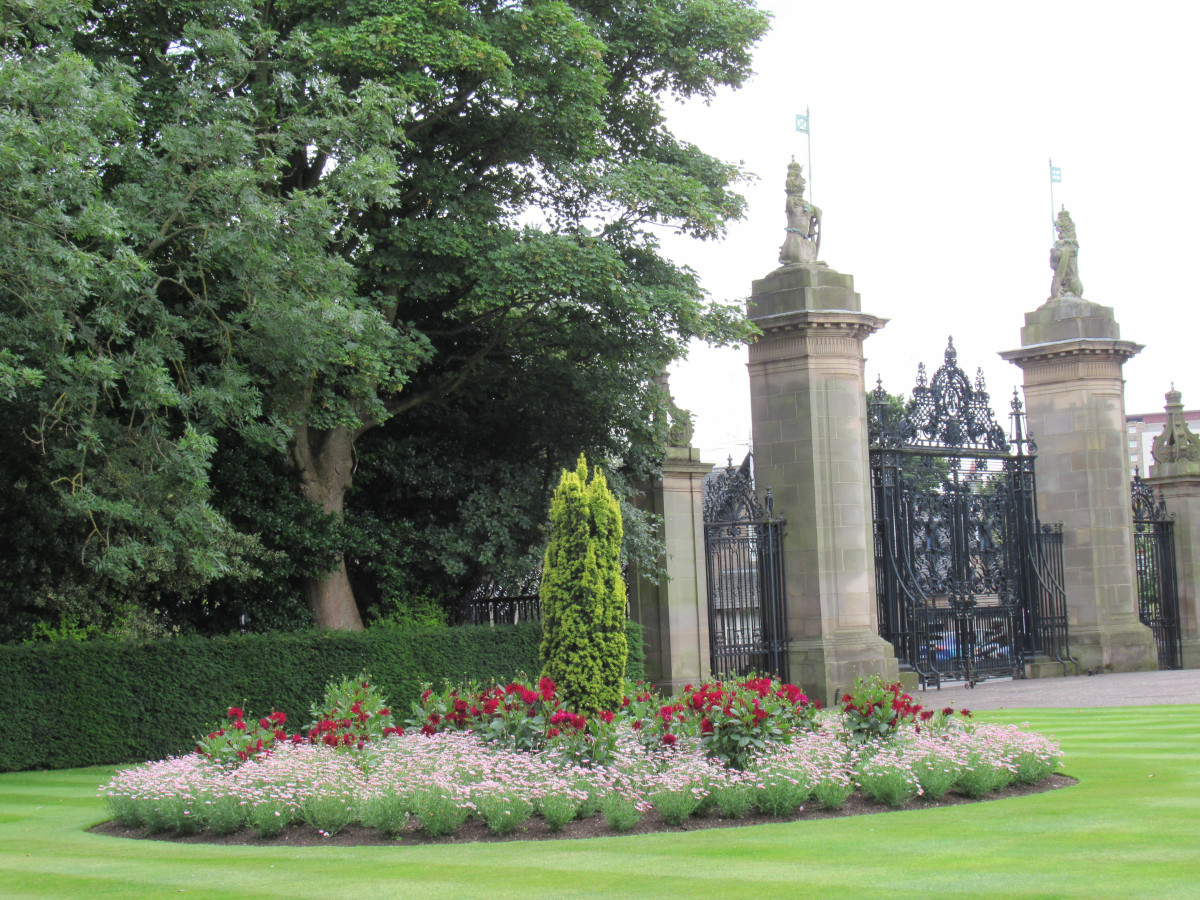
The ‘Processional Route’ leads between the King’s and Queen’s Apartments, built by Charles II after the restoration of the monarchy. The largest room, the Great Gallery, displays 110 portraits of Scottish monarchs (‘real and legendary’) installed to reassert the idea of the legitimacy of Scottish royalty at that crucial time. You’ll note that many of them look similar, partly because they were all done by one artist and partly to reinforce the intended message! It was here that Bonnie Prince Charlie held his jubilant celebration ball and today the room is used for such important occasions as state banquets and investitures.
The Throne Room contains portraits of the Stuart monarchs and their wives: James I, Charles I, Charles II and James II. Today, a luncheon is held in this room after the induction of a new member to the Knights and Ladies of the Order of the Thistle’, the Scottish version of a knighthood. Look out too, in the Dining Room, for the silver banqueting service presented to George V on his Silver Jubilee. The 3000 pieces, all made in Edinburgh and each decorated with the Scottish Coat of Arms, include those vital pieces, asparagus tongs, oyster forms and soufflé dishes. You can also wander 4 hectares of grounds, where Royal garden parties are held each summer.
Listen to the POdcast
Reading suggestions
A History of Edinburgh by Christopher McNab
Edinburgh, A History of the City by Michael Fry
Mary Queen of Scots by Antonia Fraser
links for this post
Previous episode Edinburgh Castle
Next episode The Royal Mile

